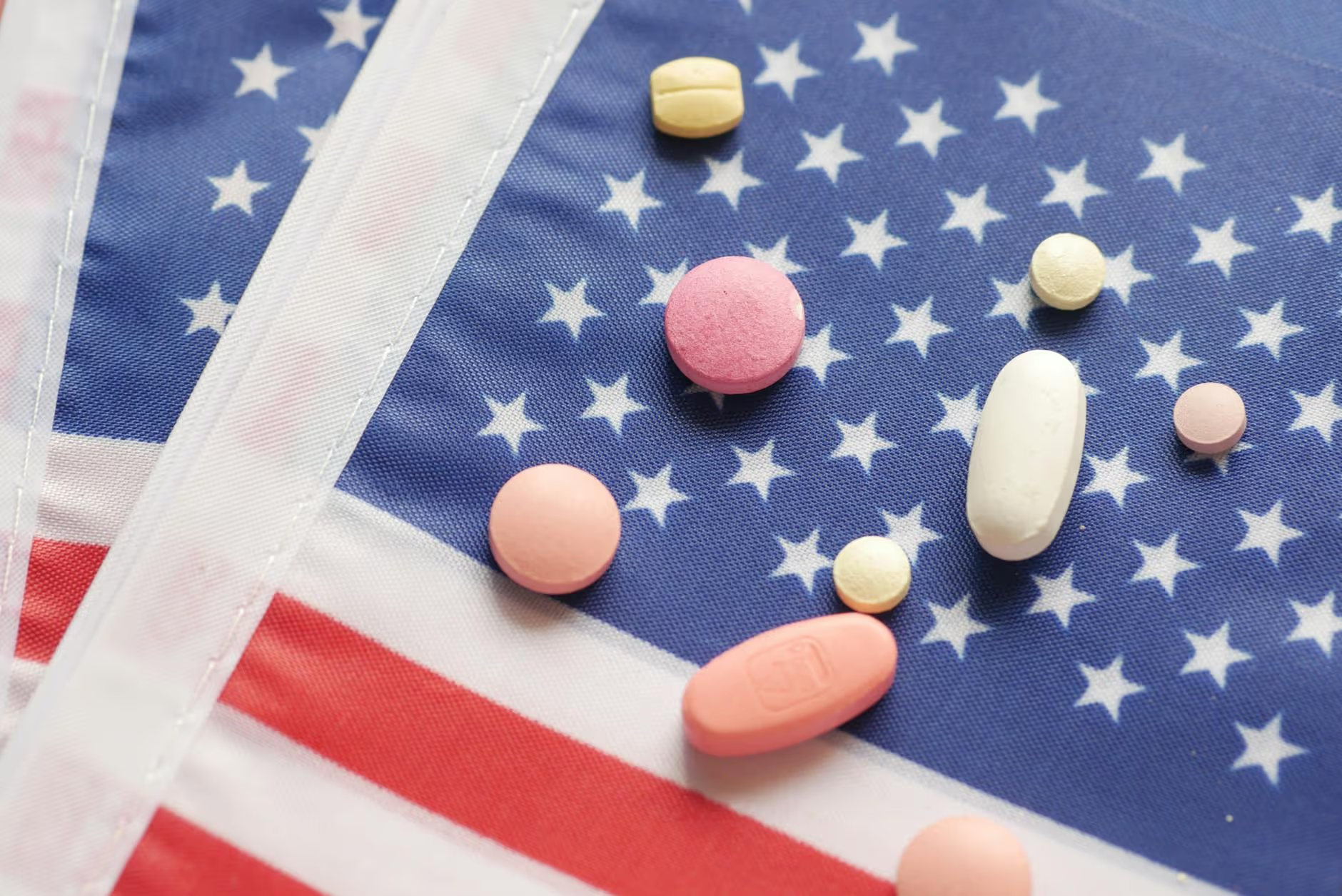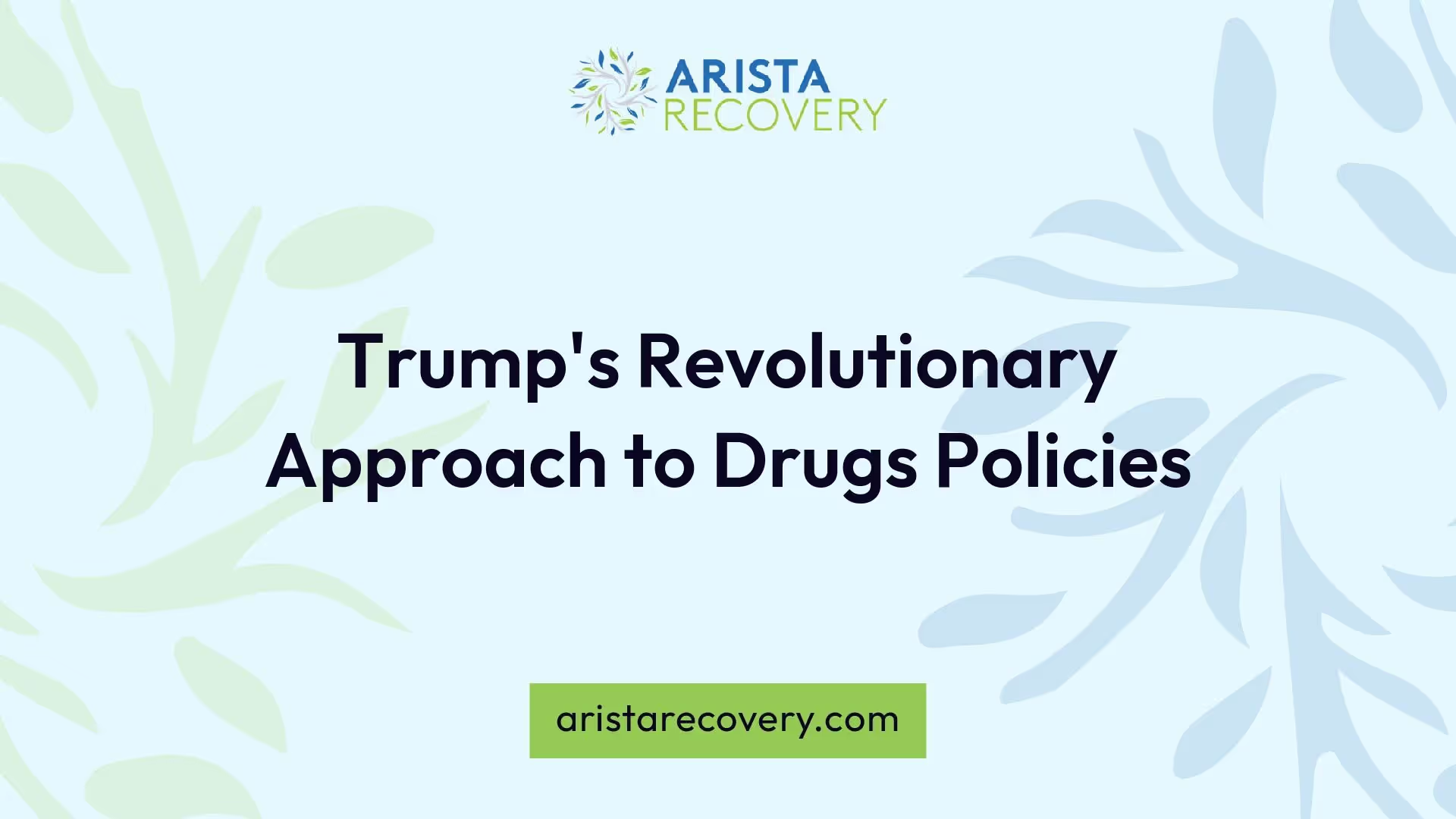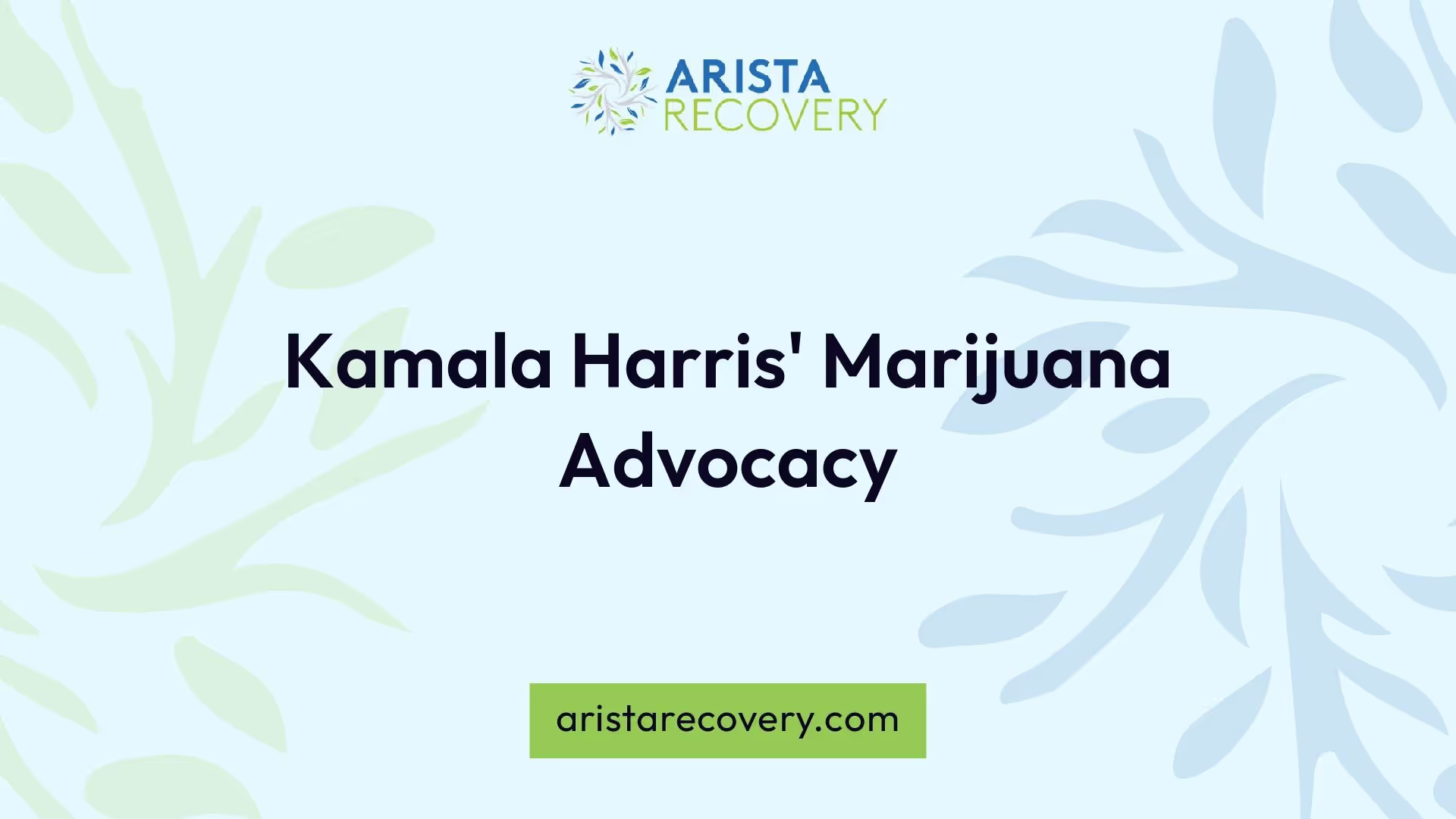Trump's Revolutionary Approach to Drugs Policies

Trump's Stance on Marijuana
Donald Trump's approach to marijuana policy has evolved over time, reflecting a mix of state rights advocacy and a nuanced acknowledgment of the drug's growing acceptance in American society. His presidency has been marked by significant discussions surrounding marijuana legalization and its medical potential.

Marijuana Legalization Policies
During his 2016 campaign, Trump suggested leaving the issue of marijuana legalization to individual states. This stance indicated a preference for decentralized governance, allowing states to chart their own course on cannabis policies. However, in a shift of focus, his 2021 budget proposal aimed to end a federal policy that protected state medical marijuana programs from Justice Department interventions. Such moves raised concerns about federal overreach regarding state-level decisions on marijuana use.
Former President Trump's public embrace of federal legislation regarding cannabis aligns him with broader trends, including those from the Biden-Harris administration’s accomplishments on cannabis policy. This strategy may attract younger voters and key demographic groups, as marijuana legalization enjoys support across partisan lines, particularly among voters under 35 and Black men, with a Pew Research survey from 2022 indicating that approximately 61% of Black men support marijuana legalization.
Marijuana Research and Medical Potential
Trump's policies also reflect an acknowledgment of marijuana's medical potential. While he has not advocated for unrestricted legalization, he has demonstrated a willingness to explore and support research into cannabis for therapeutic uses. His administration's interest in medical marijuana suggests an understanding of its potential benefits for specific conditions, leading to a growing acceptance in various states.
The intersection of medical marijuana advocacy and policies could encourage more research and development in pharmaceuticals derived from the cannabis plant. This shift may ultimately lead to broader acceptance and a comprehensive reevaluation of drug policies within the wider framework of national healthcare and addiction treatment strategies.
For further insights into effective addiction recovery, explore topics like fear in recovery or consider setting a good example in your community.
Kamala Harris' Marijuana Advocacy
Kamala Harris has been a prominent figure in advocating for changes in marijuana policies. Her journey reflects a significant evolution in views on cannabis and its regulation.

Evolution of Views on Marijuana
Harris's position on marijuana has changed significantly over the years. Initially, as a district attorney, she was involved in prosecuting marijuana offenses. Later, as California's attorney general, she opposed the sale of marijuana for recreational use. However, her perspective shifted dramatically by the time she became a U.S. senator. In 2019, she introduced legislation aimed at legalizing marijuana and expunging nonviolent marijuana offenses from criminal records.
This transformation highlights her recognition of the need for reform in cannabis policies. It aligns with a broader understanding of the socially unjust implications of previous marijuana laws. Harris's advocacy reflects a growing consensus on the importance of moving away from punitive measures toward a more progressive approach to drug policy, particularly concerning marijuana.
Legislation and Advocacy Efforts
Kamala Harris has actively participated in various legislative initiatives aimed at reforming marijuana laws. Among her notable efforts is her sponsorship of the Marijuana Opportunity Reinvestment and Expungement (MORE) Act, which seeks to legalize marijuana at the federal level and create pathways for expunging previous convictions.
Her advocacy extends beyond legalization, incorporating social justice elements. Harris has emphasized the disparities in the enforcement of marijuana laws, particularly how they have disproportionately affected minority communities. The legislation she supports not only intends to legalize marijuana but also prioritize equity and reinvestment in communities adversely affected by past marijuana policies.
Her stance on marijuana reform is also aligned with evolving public attitudes toward cannabis, with many Americans now favoring legalization. This shift mirrors former President Trump's suggestion regarding federal polices on marijuana, which indicated a willingness to leave decisions to the states, as well as to explore medical research in cannabis. Harris's approach complements Trump's acknowledgment of the complexities surrounding marijuana, fostering a unique dialogue on drug policy in the political sphere.
In examining Kamala Harris's advocacy, it is clear that her evolution in views and active legislative efforts are significant components of the ongoing conversation about drug policies in the United States. Her focus on social equity and justice positions her as a crucial player in shaping the future of marijuana legislation. For further insights on drug policies, you can explore issues such as fear in recovery and warnings negative effects using substances not effective with teens.
Trump's Healthcare Policies
Trump's approach to healthcare policies has had a significant impact, particularly regarding religious freedoms and modifications to Medicaid. These areas have garnered attention and debate among stakeholders in the healthcare sector.
Focus on Religious Freedoms
During Trump's presidency, there has been a notable emphasis on religious freedoms in relation to healthcare. His administration took steps to allow religiously affiliated employers the option to exempt themselves from providing certain healthcare services, specifically those that contradict their religious beliefs. This policy shift raised concerns about the potential narrowing of abortion access and reproductive healthcare services for many individuals who rely on employer-provided health insurance [3].
The implications of these policies are reflected in the broader debate surrounding healthcare access and individual rights. While proponents argue that such policies protect religious freedoms, critics express concerns about their impact on healthcare availability for marginalized groups.
Changes to Medicaid
Trump's administration implemented several significant changes to Medicaid during his tenure. Notably, efforts were made to allow states to enforce work requirements for certain beneficiaries. This initiative aimed to promote employment among Medicaid recipients, although it also sparked discussions about the accessibility of healthcare for vulnerable populations.
Additionally, Trump's administration introduced an option allowing states to convert portions of their Medicaid funding into block grants. This change aimed to provide states with more flexibility in managing their Medicaid programs while also raising questions about the long-term sustainability of such funding models [3].
The table below outlines some key statistics regarding Medicaid changes during Trump's presidency.
These changes have influenced the landscape of healthcare access, particularly for low-income individuals dependent on Medicaid assistance. As discussions continue around the effectiveness of these policies, it remains crucial for stakeholders to consider both the advantages and potential drawbacks regarding healthcare accessibility. For those interested in understanding addiction better, including issues related to fear in recovery and teen access to prescription meds, further resources are available.
Trump's Drug Pricing Strategies
President Trump’s approach to drug pricing includes various promises and policies aimed at reducing the costs of medications, particularly for those covered under Medicare. His initiatives reflect an ongoing effort to address the high prices of prescription drugs in the United States.
Promises and Policies on Drug Prices
During his administration, Trump proposed measures intended to lower drug prices for consumers. One notable proposal involved allowing the sale of cheaper foreign pharmaceutical drugs in the US. This initiative aimed to enhance accessibility but raised concerns regarding the safety and reliability of drugs manufactured outside the United States. Legislative action would have been necessary to facilitate this importation, reflecting the challenges of implementing such an idea.
Additionally, President Trump emphasized controlling drug prices within Medicare. His administration adopted a model whereby Medicare would not pay more for prescription drugs than the "most-favored-nation price." This pricing model sought to ensure that Medicare drug prices aligned with the lowest prices that manufacturers offered in selected foreign countries.
Actions on Prescription Drug Costs
To actively reduce prescription drug costs, the Trump administration released various strategic documents, such as the National Interdiction Command and Control Plan, highlighting their strategy to combat drug-related challenges [6]. His policies included specific efforts to regulate prices and enhance the affordability of drugs for consumers, especially for seniors relying on Medicare.
Despite these strategies, public health experts urged significant funding for opioid prevention and treatment, suggesting that the federal allocations under the Trump administration were not sufficient to effectively battle the opioid crisis. The Comprehensive Addiction Resources Emergency (CARE) Act of 2019 proposed a more substantial federal commitment, targeting funding to areas most impacted by the epidemic [7].
By implementing these drug pricing strategies, Trump aimed to alleviate some of the financial burdens facing patients while navigating the complexities of healthcare policy and public health issues.
Trump's Approach to Opioid Crisis
As the opioid crisis escalated in the United States, the Trump Administration implemented a multifaceted strategy to combat the epidemic. This approach emphasized both public safety and public health as essential components in addressing addiction and drug use in America.
National Drug Control Strategy
The Trump Administration sought to reduce the number of Americans using opioids, cocaine, marijuana, and other psychoactive substances through a comprehensive strategy. This framework aimed to balance enforcement with opportunities for recovery and support for those affected by addiction.
The strategy included several key components:
Initiatives to Address Opioid Use Disorder
In addition to the overarching national strategy, several specific initiatives were launched to address opioid use disorder more directly. One significant policy was the expansion of the Second Chance Act, which aimed to offer rehabilitative and educational opportunities for incarcerated individuals. This act encouraged partnerships between prisons and private organizations to implement effective programs focused on reducing recidivism.
Key aspects of these initiatives included:
- Sentencing Reforms: Implemented notable changes to drug-related sentencing, enhancing fairness and allowing judges more discretion in cases involving prior convictions. These reforms were supported by the First Step Act, which specifically addressed the penalties for crack cocaine offenses and reinstated the retroactivity of the Fair Sentencing Act of 2010 [8].
- Rehabilitative Efforts: Encouraged participation in programs designed to tackle substance abuse, mental health challenges, and lack of education or job skills. By 2023, participation in these programs saw an increase of 35%, although challenges, such as long waitlists for essential services, remained.
- Public Awareness Campaigns: Launched initiatives emphasizing the dangers of substance misuse, specifically targeting underage individuals and educating communities about the risks of opioid use and addiction.
Through these measures, the Trump Administration aimed to create a balanced approach to drug policies that focused on prevention, treatment, and recovery for individuals grappling with opioid addiction.
The First Step Act
The First Step Act represents a significant shift in U.S. drug policies, aiming to reform sentencing and rehabilitation processes for those affected by the criminal justice system. This bipartisan legislation, signed into law on December 21, 2018, sought to combat the issues stemming from harsh penalties for drug offenses.
Sentencing Reforms and Rehabilitation
One of the key components of the First Step Act is its focus on reforming sentencing practices. The Act introduced measures to reduce mandatory minimum sentences for certain non-violent drug offenses, allowing judges more discretion in sentencing. Over 58% of individuals released under this Act were serving time for drug trafficking offenses, and only 13% of these individuals were rearrested or reincarcerated post-release; in contrast, 57% of individuals released from state custody for similar offenses recidivated within three years [9].
The Act also expanded rehabilitative and educational opportunities within federal prisons. By 2023, participation in such programs increased by 35%. However, challenges remain, particularly regarding the availability of these programs. Long waitlists for essential services like literacy education still persist, indicating that while the Act has made strides, it has not fully met the needs of incarcerated individuals [9].
Impact on Federal Prison Population
The First Step Act has significantly influenced the federal prison population and its dynamics. By enabling over 12,000 individuals in federal prisons to be placed under home confinement, the Act has helped reduce the number of individuals in prison. As of July 2023, over 7,000 individuals continued to serve their sentences at home, a measure further supported by the CARES Act during the COVID-19 pandemic.
Historically, the U.S. federal prison population exploded due to stringent drug policies, transitioning from 47% of total admissions in 1980 to 86% in 1991. The application of mandatory minimums and three strikes laws led to a disproportionate impact on people of color, especially Black Americans. The First Step Act aims to address some of these longstanding issues by rolling back some of the harsher measures implemented in the past.
Overall, the First Step Act represents a crucial effort to reform drug policies and address the complexities of addiction within the criminal justice system. For more information on addressing addiction concerns, individuals can explore topics on fear in recovery and setting a good example.
References
[1]: https://www.cbsnews.com/news/trump-harris-stances-marijuana-2024/
[2]: https://www.politico.com/news/2024/09/15/donald-trump-marijuana-legalization-00179205
[3]: https://www.statnews.com/2024/11/06/presidential-election-trump-health-care-abortion-medicare-rfk/
[4]: https://www.ncbi.nlm.nih.gov/pmc/articles/PMC6407585/
[5]: https://www.mcdermottplus.com/blog/regs-eggs/its-the-final-countdown-comparing-the-last-regulatory-actions-of-the-biden-and-trump-administrations/
[6]: https://trumpwhitehouse.archives.gov/ondcp/the-administrations-approach/the-administrations-strategy/
You’re not alone in this.
When mental health challenges and addiction intersect, it can feel isolating. At Arista, we offer compassionate, evidence-based, and trauma-informed care to help you heal, grow, and move forward.
You’re not alone in this.
When mental health challenges and addiction intersect, it can feel isolating. At Arista, we offer compassionate, evidence-based, and trauma-informed care to help you heal, grow, and move forward.
Support that moves with you.
You’ve taken a brave first step. At Arista Recovery, we’re here to help you continue with best-in-class care designed for long-term healing and support.
.webp)






